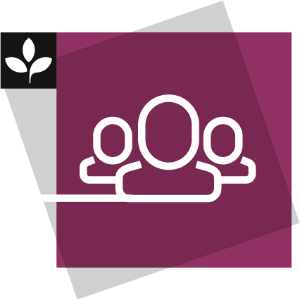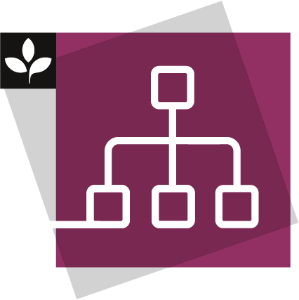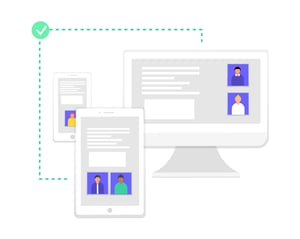- 7 MIN READ -
Here’s how Totara Audiences and Totara Hierarchy features allow you to get even more corporate functionality from what is already the most flexible open-source LMS out there.
Totara Learn is an open-source corporate LMS designed for businesses of all kinds, including healthcare organizations and government agencies. Totara Learn’s Audiences and Hierarchy features help you recreate complex organizational structures in a digital space so that your LMS is accurately targeted towards your training goals.
 |
Source: totaralearning.com. |
What are Totara Audiences?
Audiences is a feature in Totara Learn that increases your ability to organize users. With audiences, you can manually add users to one or more audience groups, or set automated rules to automatically sort users.
HR information is the most commonly used dataset for sorting users—defining audience memberships based on things like specific course completion or organizational role.
Once users are organized into groups, you can then use Audiences to assign a course, program, or certification. You can also assign goals, system roles, or learning templates.
You can easily customize this feature by creating different rules for managing your audiences. Totara’s nested audience feature lets you create rules or assign learning content to more than one group at a time.
New to Totara Learn (LMS)? Save yourself a heap of time and a load of effort with our free Totara User Guide Part 1: Getting Started.
With Audiences, it’s easy to set up...
- Dynamic membership
With rule sets, you can use Audiences to create multi-level conditions for membership of an audience group. Membership of audience groups is assessed and updated by Totara each time a user has a task scheduled.
- Custom visibility and enrollment
Totara Audiences has visibility options, meaning you can choose the courses, programs, or certifications that group members can see. Additionally, you can enroll users automatically by adding a particular course, program, or certification to the Enrolled Learning tab.
- Learning plans
Audiences teams up with Totara Learning Plans to ensure that all members of an audience group follow a specific pathway within the LMS. by assigning a learning plan to an audience, the plan template will appear for each tagged user.
- Audience-specific resources
Many admins use Totara Audiences to automate resource allocation. Information that’s useful to a particular team or role—analytics dashboards for instructors, for example—can be assigned to all LMS users in an audience group, so that there’s no excuse for missing the latest important report or activity posting. Managing resources this way also helps to create a unique LMS environment for each audience group.
Managing audiences with Totara Learn (Source: Totaralearning.com).
What is a Totara Hierarchy?
The hierarchy feature makes Totara Learn a flexible LMS that can reflect how your business is organized. Job Assignments is the mechanism that allows you to tag users for a particular hierarchy—this might be based on one or more conditions, such as a user’s manager, organization, and position within a team.
There are different ways to create a hierarchy within your LMS, and you can create multiple hierarchies with unique frameworks thanks to these features…
For a step-by-step guide to implementing Hierarchies, Managing Users, and customizing your design and navigation just grab your copy of the Totara User Guide Part 2: Basic Features
Positions
A Position hierarchy assigns job roles to users, so their LMS status reflects their role in your organization. For example, a manager could assign courses to the employees they are responsible for, and review their performance, all within the open-source LMS.
Position hierarchies are also useful for inputting more details, or conditions, to users. This makes them a good partner for the Organization hierarchy (see below) when it comes to in-depth reporting and comparison of different aspects of your business.
Competency
You can create a Competency hierarchy to better understand user performance, course completion, or other aspects of learner interactions. This is a great way to encourage knowledge-sharing and a mentorship culture, where employees can look to colleagues further up the hierarchy to upskill.
Especially in larger organizations, tech apps can have a significant effect on how much knowledge is shared internally. According to research from the Journal of Managing Information Technology, organizations can increase peer mentoring by providing workers with a digital infrastructure to create, store, and distribute knowledge.
Wondering what else the lastest Totara Learn LMS update has in store? Watch our webinar: Totara Learn 12 - More Powerful, Easier to Use.
 |
Source: totaralearning.com |
Goals
A Goals hierarchy encourages top-down organization, where pathways to overall KPIs can contain smaller objectives for individual audiences or users.
Organization
You can even use LMS hierarchies to reflect the physical hierarchy of your business. An Organization hierarchy lets you define different departments, regions, teams, or other organizational categories.
For example, you can create an audience group with a learning plan for new onboards, and then use an Organization hierarchy to compare the onboarding progress across different branches.
Tenant hierarchies
This hierarchy is useful for organizations that train multiple clients using a single corporate LMS. By creating a multitenant structure, users can be organized and categorized for both privacy and reporting purposes. With a Tenant hierarchy, you can report at the course level and distribute information site-wide, while at the same time controlling access according to hierarchy level.
Setting up position hierarchies in Totara Learn LMS (Source: totaralearning.com).
Dive even deeper to get the most out of your Totara Learn LMS with features for streamlining HR Integration, compliance training, and customized learning plans with the final installment of the Totara User Guide Part 2: Advanced Features
Totara Learn Audiences and Hierarchies—4 Key Benefits
1. Meet individual and organizational KPIs
Learning Management Systems really come into their own when it becomes possible to set, track, and manage goals at an individual level.
Most organizations need to implement regular training programs to accommodate things like updates to safety protocols or customer communications policy. Seeing how each learner is progressing on these programs gives real, granular insights on training, letting you know exactly how new programs are functioning.
When you can see what learners are doing, daunting organization-wide goals can be translated into smaller, more manageable aims, relevant to a specific team or department. Using Totara Audiences and hierarchies, you can assign customized goals and benchmarks to each user or group.
2. Deliver personalized guidance
LMS management has a significant impact on the way learners experience and engage with content. This is especially true when it comes to making sure that line managers have the appropriate level of responsibility and power within the LMS environment.
Using a Position hierarchy, you can assign greater access and admin rights to team leaders, making them more able to manage their employees—assigning them content, reviewing their performance, and generally using the LMS to give them more attention.
Giving managers the ability to handle tasks such as assigning learning content, creating learning paths, or managing certifications also allows HR and L&D to focus on other areas.
|
Tip: Use hierarchies and audience groups to let users report to their managers for appraisals, learning plan approval, and updated training goals. Managers can use the My Team tab in the top navigation menu to look at their team's progress on courses, programs, or certifications. |
 |
Source: unDraw.co |
3. Save time through HR import
If you’re a Totara user, then you may already be familiar with the benefits of LMS Cloud Hosting. Alongside cloud compatibility, Totara can also organize datasets stored in the cloud, through HR Import. This mechanism enables speedy population of user information and hierarchies—achieved through either a CSV upload, or automatically updated through an Active Directory.
Hierarchies themselves can also be created and updated using HR Import. In this case, you’ll first need to create a framework, so that when a hierarchy is uploaded, Totara Learn will know how to allocate the component.
4. Seamless progression
By managing audience group rules, you can significantly improve the learning experience for users, giving things a more seamless and professional feel.
For example, you could create an audience for new onboards who need to complete an induction module, before they’re automatically moved to a different audience where they can begin building a customized learning plan.
Simple rules make a big difference—automatically moving users into groups where they’ll have better access to training that’s relevant to their role, saves both time and possible confusion.
Lambda Solutions is here to help you implement corporate LMSs such as Totara Learn—guiding you through the process of setting up audiences and hierarchies. If you’d like to find out more about how these features help create an LMS that reflects your organizational chart, don’t hesitate to get in touch!




